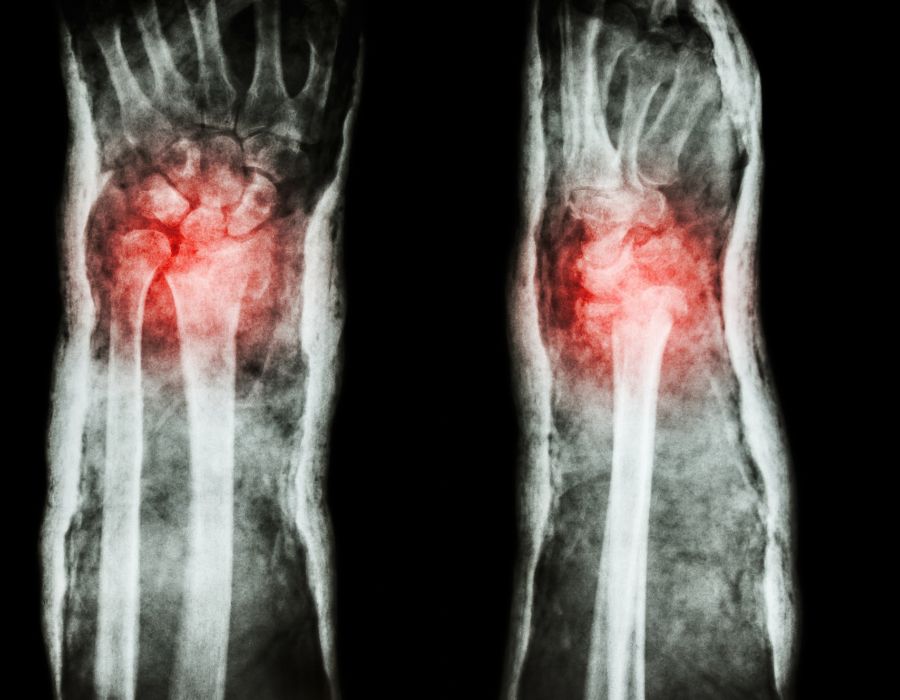Introduction
The occupational therapist will introduce various mobility exercises for the wrist to regain flexibility. These exercises tend to be frequent and in short duration. You will be encouraged to start incorporating the use of your wrist in simple daily activities, like wiping the table, playing poker cards, etc.
Generally, wrist fractures take several weeks to heal. Full recovery of motion and strength may take several months. Based on your progress, your therapist will teach you various strengthening exercises to facilitate your recovery.
For further information, please approach your occupational therapist
What is a distal radius fracture?
This is an injury in which one of the bones in our forearm, the radius, is broken at the wrist (Figure A).
What causes a distal radius fracture?
This injury is commonly sustained after a fall on an outstretched hand and can occur in any age group. The elderly, in particular those with osteoporosis, are prone to this injury.
What are the common symptoms of a distal radius fracture?
Pain, swelling, and deformity in the wrist after injury are the most common symptoms. Less commonly, numbness in the hand or digits may occur due to compression of the median nerve as a result of soft tissue swelling.
What investigations do I need?
The doctor will usually advise an X-ray of the wrist. In certain cases, a Computed Tomographic (CT) scan of the wrist may be recommended to study the fracture fragments in detail.
What are the treatment options?
Some distal radius fractures may be treated without surgery. This usually involves manipulation and reduction of the fracture (manually moving the fracture fragments back to their correct position) and placing the wrist in a full cast to allow the fracture to heal. Surgery is usually needed when there is a significant displacement of the bone or there is fragmentation of the joint surface, that cannot be corrected by manipulation and plaster cast. Surgery involves opening the fracture site and connecting the fracture using a metal plate and screws or pins.
What are the problems associated with distal radius fractures?
Nearly all fractures result in the wrist and sometimes finger stiffness that requires physical therapy to regain movement in the joints. Fractures involving the cartilage surface of the joint may result in early arthritis of the wrist joint. Occasionally the fracture results in compression of the median nerve at the wrist which will cause numbness in the fingers.
Occupational Therapy for Management of Wrist Fractures
Recovery time from a wrist fracture varies with the individual, the nature of the injury, and the type of reduction for wrist fracture. Throughout your recovery, your therapist will work closely with you on maximizing your wrist functions to enable you to gradually return to daily work and leisure activities.
Right after cast removal or wrist reduction surgery, you may be fitted with a wrist splint for support.
You should elevate your hand above the heart and do digital pumping exercises to control the swelling. You can start engaging your injured hand in light self-care such as dressing and grooming to prevent stiffness of fingers, elbow, and shoulder.
Conclusion
your health is of utmost importance, and seeking professional medical advice is vital for accurate diagnosis and appropriate treatment. Trust Dr. Chaitanya Karande Patil, a leading hand surgeon in Pune, to guide you through your hand-related concerns and provide the care you need for a healthier, happier life.





